For the New York Rangers, success in 2021-22 has oddly created plenty of confusion.
They’ve been powered by a bevy of highly-productive players in Chris Kreider, Artemi Panarin, Mika Zibanejad, Ryan Strome, Adam Fox and Igor Shesterkin – but that’s raised concerns that the team is top-heavy.
Their well-regarded young players are coming along, making mostly steady progress – but most of them are still in the infancies of their careers, perhaps not ready to make significant impacts amid the crucible of the NHL playoffs.
There’s also the matter of their gaudy 32-13-5 record, marking a major and unexpected leap in their fortunes – and forcing the organization to consider whether the timeline to Stanley Cup contention has been greatly accelerated.
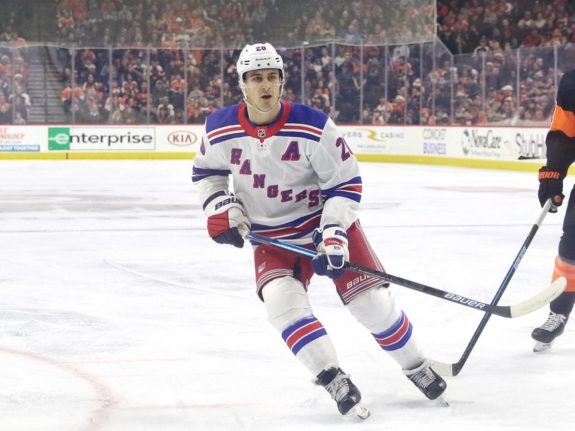
The key question is, are the Rangers ready to chase a championship, all but requiring the addition of reinforcements before the trade deadline? Or is the club not nearly as good as its record, as some critical metrics suggest, and the front office should maintain the long view and hold back its best assets in order to make big moves during the offseason instead?
No one is more affected by these conflicting schools of thought than general manager Chris Drury, who in his first year on the job, has been buoyed by the Rangers’ steep rise while being forced to face a huge decision on the team’s future path because of it. Drury has less than a month before the March 21 deadline to choose a course for his club, whether to pursue a big fish such as J.T. Miller or Tomas Hertl or Mark Scheifele to strengthen the forward lines for a run at the Cup, to add a veteran defenseman to his youthful blue line, or to make a lesser move or even stand pat with an eye toward the summer.
So let’s take a look at why Drury might opt to go for it this season – and why he might see patience as a more prudent approach for the up-and-coming Blueshirts.
Three Reasons Why the Rangers Should Make a Big Trade at the Deadline
1. Kreider, Panarin and Zibanejad will probably never be better than they are now. At age 30, Kreider has finally figured it out, his career-best 33 goals placing him among the league leaders. Panarin, also 30, is having a typical season, producing at well over a point per game (55 in 45 contests). Zibanejad, 28, has 51 points in 50 games.
This trio is in its prime, but it’s likely a stretch to assume all three will be just as dynamic next season or the one after. The Rangers have a triumvirate of veteran stars producing at elite levels. That kind of scenario tends to be fleeting. Failing to take advantage of that when you have it could prove to be a major missed opportunity.
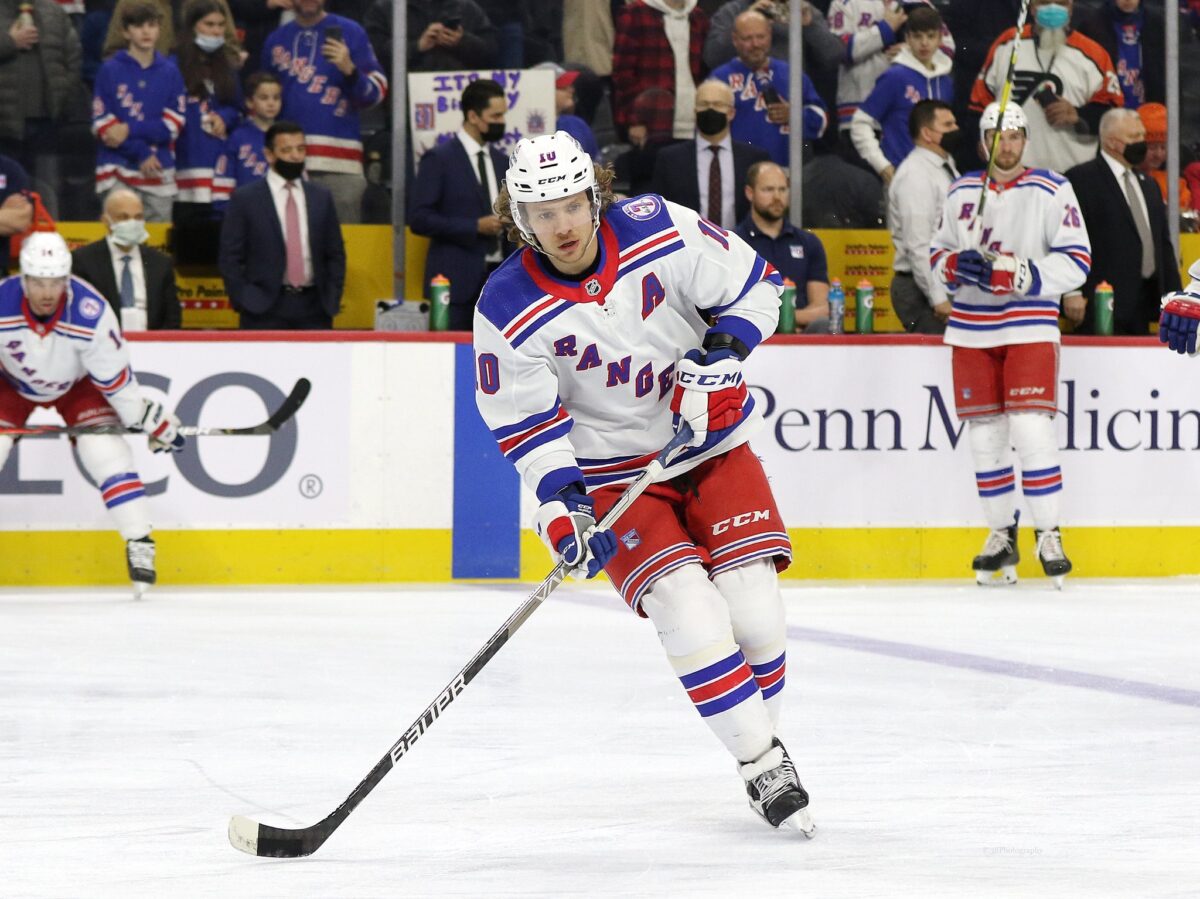
Kreider, Panarin and Zibanejad are ready to compete for a championship now, not three years down the road. Attempting to win one on the backs of their best players with so much youth and inexperience around them comes with some risk, but winning a Stanley Cup is the primary reason why the Blueshirts signed Panarin in July 2019 and re-upped Kreider rather than trade him at the 2020 deadline.
2. Shesterkin is the best goaltender in the NHL, and Fox might be the best defenseman. Shesterkin, the clear frontrunner for the Vezina Trophy, has been the team’s most important player this season. The 26-year-old’s spectacular statistics (24-5-3, 2.01 goals-against average, .939 save percentage) are all the more impressive considering his team has hardly played lockdown defense in front of him consistently.
The Rangers appear to have found their next franchise goalie, but at the same time, Shesterkin probably can’t play much better than he is right now (can anyone, frankly?). While Shesterkin also represents the future, the Blueshirts can ride a netminder who might be having a career season into the playoffs.
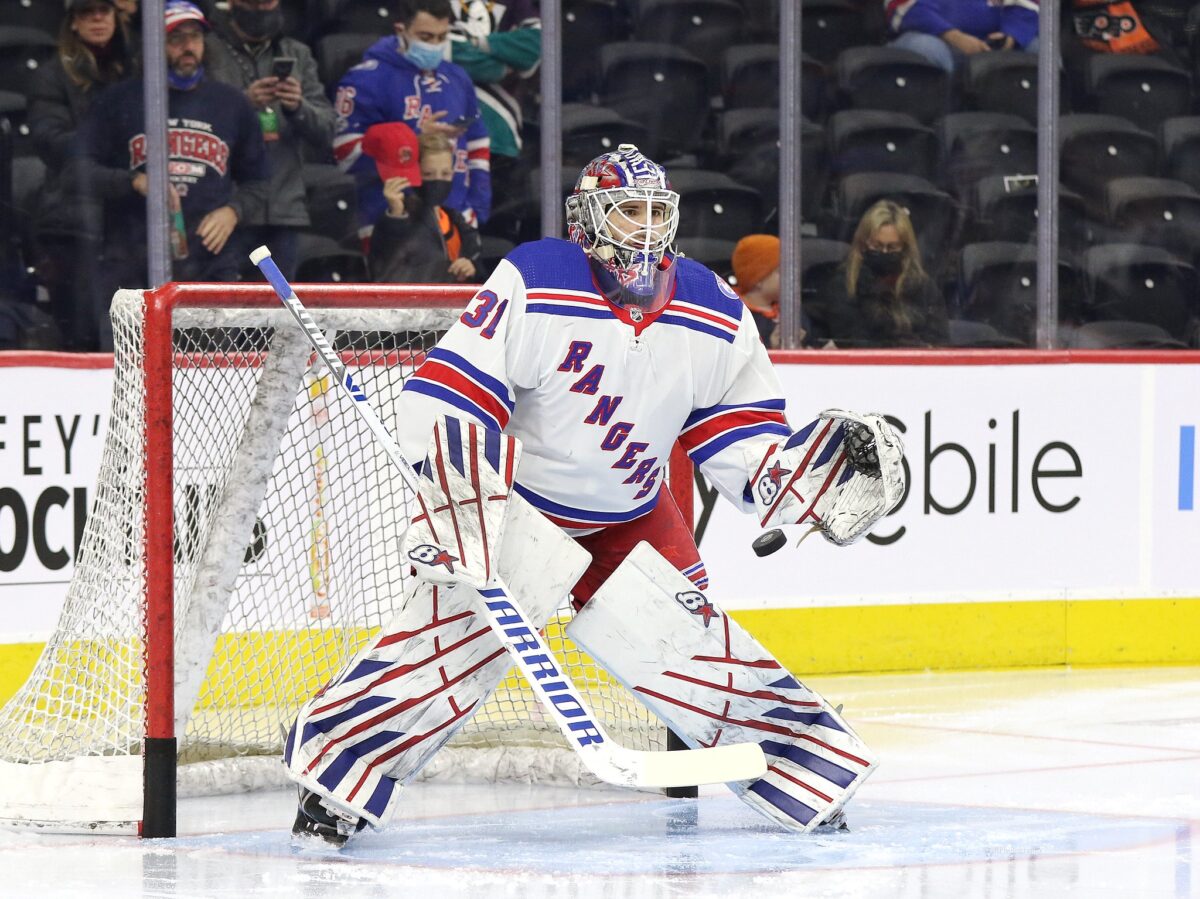
Fox’s Norris Trophy win last season might have been somewhat unexpected, but he’s on track for an even better performance in 2021-22, with 48 points in 47 games. The Rangers hardly expect the ultra-consistent 24-year-old to suffer a downturn in the coming seasons (hence his seven-year, $66.5 million extension that kicks in next season), but he’s another star that’s at the top of his game entering the stretch run.
Related: In Fox, Rangers Lock Up Another Piece of Gorton’s Rebuild
Like Kreider, Panarin and Zibanejad, Shesterkin and Fox are having spectacular seasons. Sounds like the key ingredients for a run at the Cup, no?
3. The Rangers have a massive amount of deadline salary-cap space, and the trade capital to take advantage of it. With more than $30 million in room at the deadline, the Blueshirts can fit anyone they want onto the roster for a playoff run. With their cap set to become extremely tight over the next few seasons, that won’t be the case going forward, limiting what they can do to bulk up with a late-season trade. There’s a golden opportunity to augment a high-scoring core with one or more significant acquisitions, which are badly needed with clear depth issues up front, and the chance to fortify the defense with a solid veteran such as the Seattle Kraken’s Mark Giordano.

Drury has the Rangers’ 2022 first-round draft pick, two second-rounders and highly-regarded young defenders such as Nils Lundkvist, Zac Jones and Matthew Robertson to use in a deal. Strictly from the standpoint of having the ability to make a big deadline trade, the Blueshirts couldn’t be in a better position to do so.
Three Reasons Why the Rangers Should Hold Off on Big Moves Until the Offseason
1. The Rangers’ very suspect 5-on-5 play, which becomes critical in the playoffs, is being covered up by their best players. Shesterkin’s brilliant work in net, great performances from their stars and a lethal power play has allowed the Blueshirts to overcome the fact they just aren’t very good at even strength. The Rangers’s 45.89 expected goals for percentage at 5-on-5 is 29th in the NHL, right behind the Chicago Blackhawks at 45.94 and ahead of only the woeful Montreal Canadiens, Buffalo Sabres and Arizona Coyotes (courtesy naturalstattrick.com).
The club doesn’t have to apologize for winning in spite of that, but the problem is bound to get exposed in the postseason, when fewer penalties are called and opportunities for the league’s third-best power play (26.6 percent) will decrease. Teams generally need to have at least moderate success offensively at even strength in the postseason, and the Rangers can’t claim that by a long shot in 2021-22.
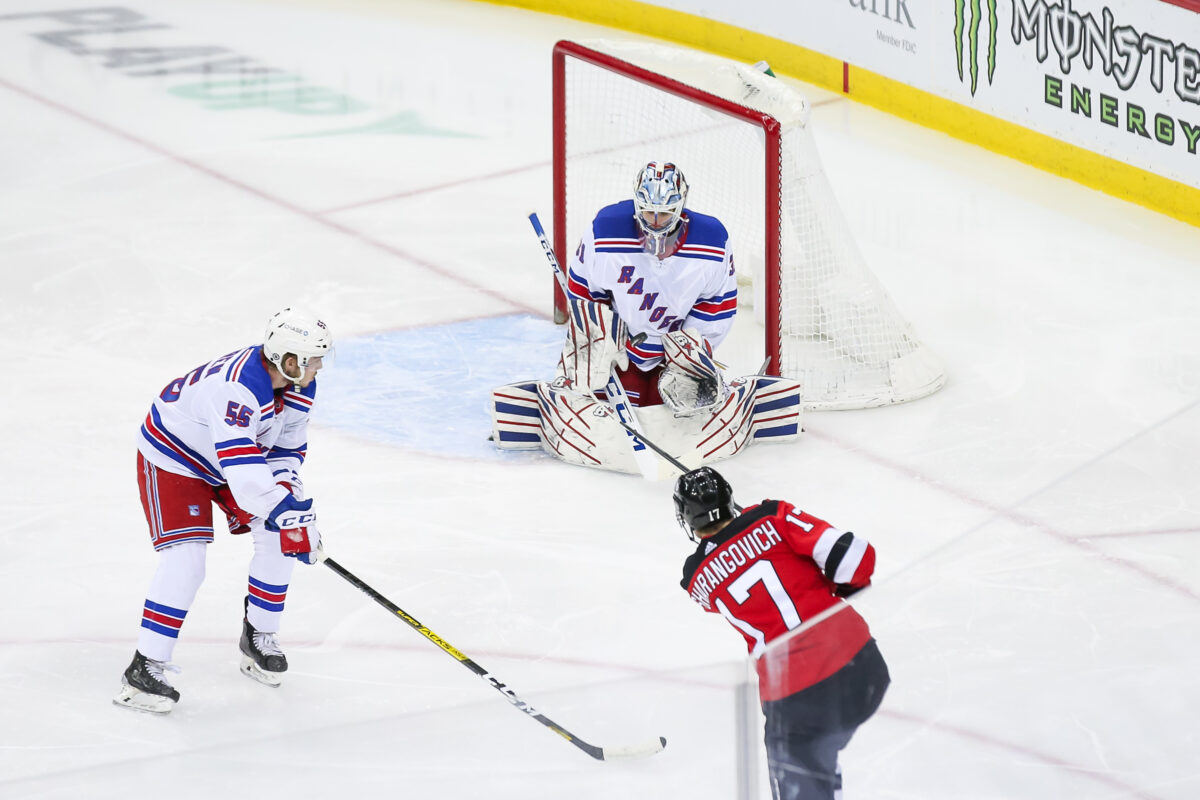
Ignoring such an obvious and significant problem and going all-in for a playoff run will be tough to justify if the team proves unready to go deep in the postseason, and has dealt away its best trade chips – especially for a rental player the club can’t afford to pay beyond this season.
The Rangers’ problems at 5-on-5 are due in part to a significant lack of depth. There’s a clear hole at right wing in the top six due to the offseason trade of Pavel Buchnevich, Sammy Blais’ season-ending injury and one unexpected defection to Russia, and the bottom two lines have contributed almost nothing of late. Even the addition of multiple forwards might not be enough to solve the problem this season.
2. The Blueshirts’ high-end youth is still so young. There’s a world of difference between the 26-year-old Shesterkin and the 24-year-old Fox, who are performing at superstar levels, and Alexis Lafreniere, Kaapo Kakko, Filip Chytil, K’Andre Miller and Braden Schneider, kids that are still feeling their way in the best hockey league in the world. None of those five players, all seen as parts of the future core, are older than 22, and Chytil’s 227 career NHL games are by far the most amongst that quintet.
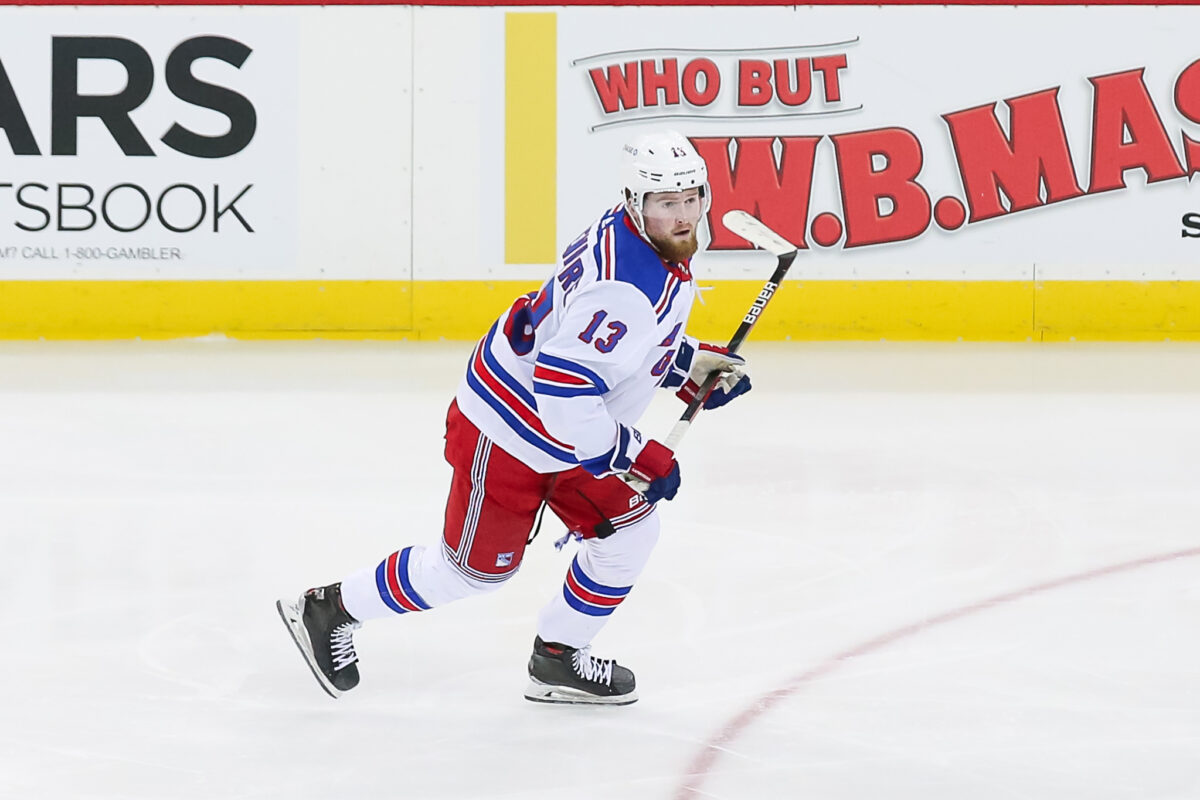
An argument can be made that, despite their excellent record, the Rangers aren’t going to be legitimate Cup contenders until all the young players they’ve acquired during their arduous four-year rebuild begin to reach their considerable potential. Despite promising signs, that still seems years away. How well will that vast inexperience play in the playoffs? How much can the Blueshirts realistically expect from those players this spring?
3. Expanded trade options exist in the offseason, with more players available as teams work to construct their rosters. The trade market picks up in the summer, with deals made at the draft and before and after the start of free agency – a contrast to the limited number of teams willing to part with difference makers for futures at the deadline. Miller and Scheifele are signed beyond this season, but other potential Rangers trade targets such as Hertl would be rentals, with the distinct possibility of them leaving as free agents in July. Acquiring players with contract term also almost certainly spells the end for impending unrestricted free-agent center Strome, a decision the club might not be ready to make by next month.
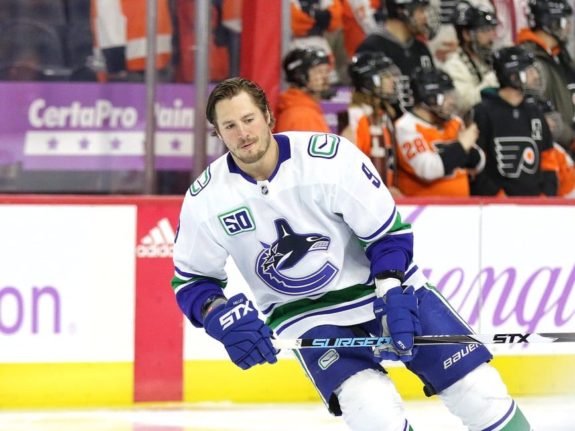
If the Rangers are set on having a top veteran player such as Miller or Scheifele teaming with Zibanejad down the middle for one more season (Miller’s contract is up after 2022-23) or two (Scheifele), then a deal for either player fills holes for this season and the near future. However, if Drury is interested in trying to pry a younger center away from another team with an eye on a longer-term solution, that kind of trade would present itself in the offseason – and would be reason for the GM to hold onto his best assets until then.
Drury Has Third Option – Trying to “Thread the Needle”
Drury could also explore the possibility of combining a bit of both courses of action – acquiring second-tier help that wouldn’t have the same impact as adding a star player, but would allow him to preserve his best trade capital for the summer. A prime candidate in that category might be veteran Arizona winger Phil Kessel, a still-productive offensive player who could be energized by leaving the rebuilding Coyotes for a playoff race. Kessel possesses an expiring contract and would likely cost the Rangers little more than a mid-round pick.
Beefing up the bottom two lines could prove to be a sound approach, and the Rangers expect to have Kakko back from injured reserve eventually to deepen the lineup as it is. Yet the GM would have to be careful not to overpay, which isn’t easy given contenders’ demand at the deadline for any sort of impact player. Conversely, such an acquisition could also predictably end up not being nearly enough of a factor to have made a lesser such trade worthwhile.
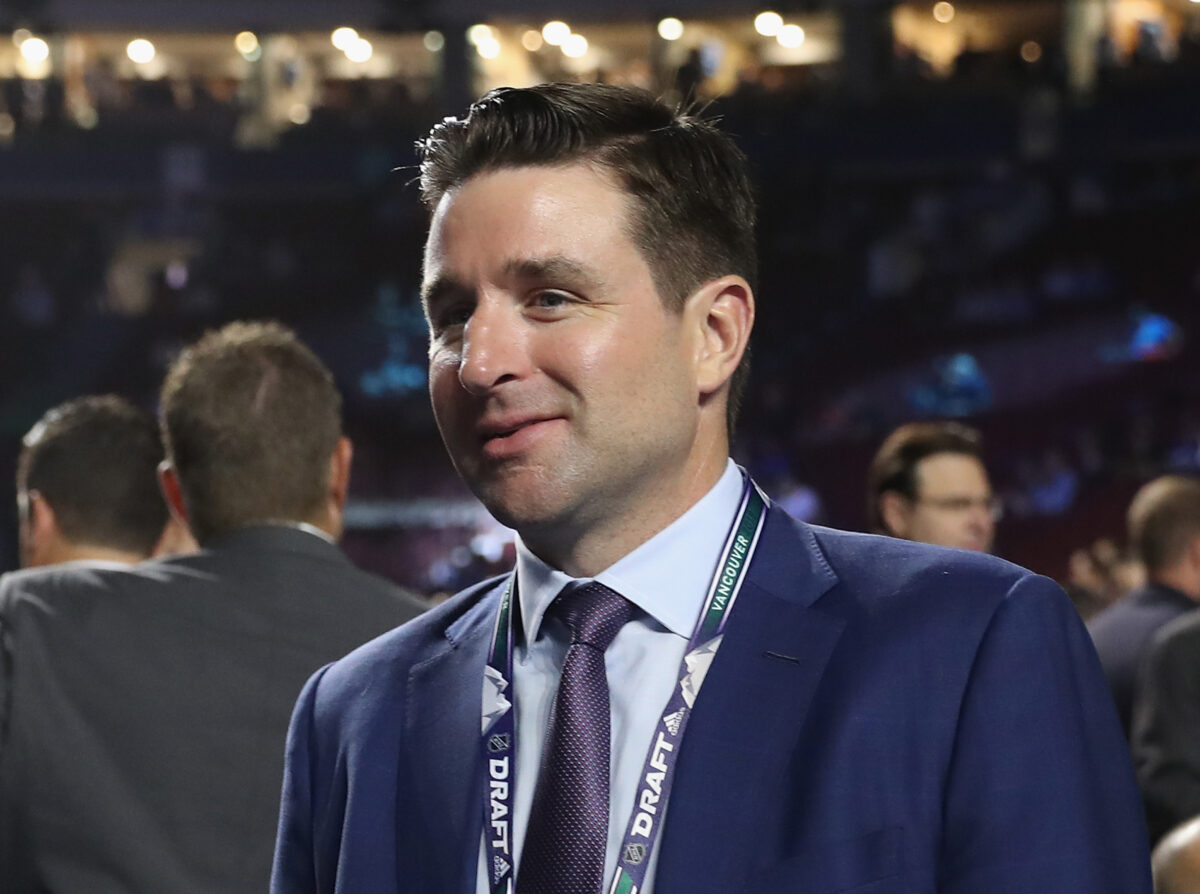
This decision looks like a doozy. Ultimately, Drury is going to have to go with his gut, factoring in how the team is playing and who’s available for what price. He has a reputation as being thoughtful and measured. The Rangers will need that here.
Drury removed himself from contention to become the Pittsburgh Penguins’ GM a year ago, ostensibly in part because he relished the eventual opportunity to run his hometown team. That chance arrived sooner than expected for the 45-year-old. With the job comes a difficult and pivotal judgment in Drury’s first season, one that could alter the path of the promising reconstruction effort he inherited and is tasked with shepherding into its next phase – the quest for a Stanley Cup.
With time growing short before the deadline, the young executive’s choice will become apparent soon enough.